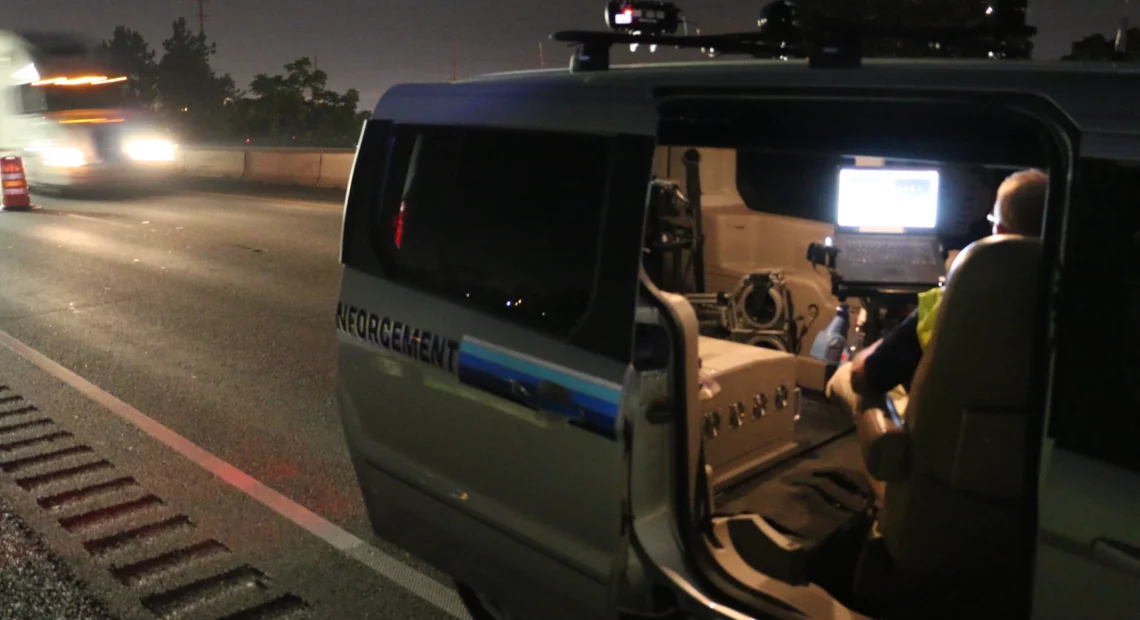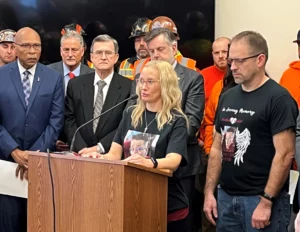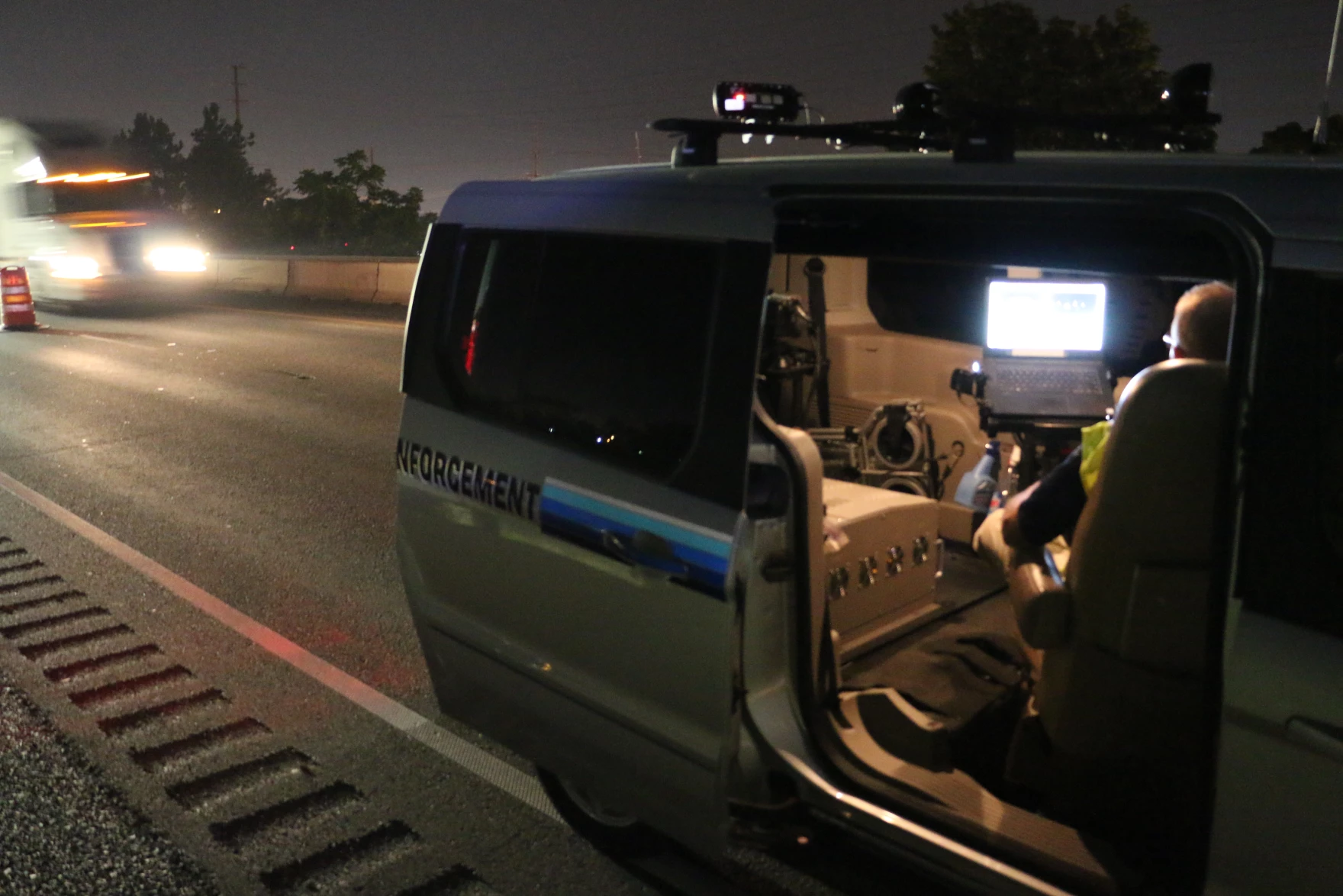
Roadway carnage has lawmakers pitching everything from more photo radar to fewer right turns on red
Read
If you have spent any time behind the wheel since the pandemic began, you’ve surely noticed people driving more aggressively and way too fast. That correlates with a rise in traffic fatalities that last year reached levels not seen since the 1990s in Washington state and Oregon.
State lawmakers in Olympia are debating a suite of possible new responses. Those include authorizing photo radar in highway work zones, prohibiting right turns at many red lights, and lowering the breathalyzer limit to convict for drunk driving. Some of these ideas have corollaries in Oregon, where the legislative machinery is getting revved up too.
“A lot of people do not feel safe driving on our roads right now,” Washington state Sen. John Lovick said, before referencing the high number of traffic fatalities recorded statewide in 2022.
“I personally think our roads are the most unsafe roads we have ever had — to lose 745 people!” Lovick, a former state trooper and county sheriff, said at the state Capitol Thursday. “If there was any other industry where we lost that many people we would do something. We are going to do something.”
At a packed press conference, Lovick joined Gov. Jay Inslee, the state Senate and House transportation committee chairs, a bevy of other Republican and Democratic state lawmakers, traffic safety advocates and a crash victim’s grieving family to promote the package of new legislation. A phalanx of highway construction laborers dressed in safety orange provided a living backdrop behind the parade of speakers.
The traffic safety proposals the lawmakers described would tackle the problem from a number of angles. Oregon lawmakers are coming up with yet other approaches. Some of the notables include:
Photo radar and traffic cameras
Washington’s transportation department wants the state Legislature to allow speed enforcement ticket cameras in highway work zones. The objective is to make more drivers observe the speed limit when passing just feet or inches from vulnerable workers. Last year, five workers were killed and 28 seriously injured by crashes in work zones in Washington state, according to the laborers union.
Oregon’s Legislature first authorized photo radar for work zones in 2007, but since then ODOT has only rarely borrowed a photo radar enforcement van to issue tickets.
This session, the League of Oregon Cities is asking lawmakers to let any city do photo radar speed enforcement, not just the short list of ten municipalities now allowed.
Separately this year in Salem, five Portland-area Democrats proposed letting school districts attach video cameras to the stop arm on the exterior of school buses. Then if drivers fail to stop for the flashing bus safety lights, the relevant video clip would be shared with the police to issue a citation.
No right turn on red
Both chambers of the Washington Legislature are entertaining proposals to reduce the number of car-pedestrian and car-bicycle collisions by outlawing right turns on red at many stoplights. A spokesperson for the Cascade Bicycle Club, which supports the measures, said the catchphrase should be “wrong on red.” Cities already forbid free right turns on red at certain complex intersections. If this bill were to pass, the practice would spread statewide wherever stoplights operate near schools, parks, child care centers, senior centers, hospitals or libraries.
Lower drunk driving threshold
A proposal that has gained traction early in the 2023 legislative session in Olympia would lower the breathalyzer limit to convict someone for drunk driving. The blood alcohol content threshold for presumed intoxication would drop from .08 to .05. Utah is currently the only state in the country with a drunk driving standard of .05.
In 2019, Oregon and California legislators considered but did not pass bills to lower the legal blood alcohol limit. Back then in Salem, and this year in Olympia, the proposed tighter threshold drew pushback from the hospitality and winery industries. They were concerned that responsible drinkers would cut back at restaurants and on wine tasting trips.
More driver’s ed
A new proposal in Washington state would extend up to the age of 25 the requirement to complete a driver’s ed course to get a license to drive. Right now, if a young person waits until they turn 18, they can then take the driver’s test for a license without any formal education. Research by the state Traffic Safety Commission found that young drivers who did not complete a training course were involved in fatal or serious collisions at a much higher rate than people who took driver’s ed.
Blue lights on tow trucks
Some proposals are less controversial than others. In Olympia, tow truck operators have encountered little to no opposition while seeking permission to turn on flashing blue lights alongside their red lights when hooking up a disabled car next to traffic. The tow truck operators hope the police-style lights cause more drivers to slow down and move over.
Sleeping too close to the roadside
One idea that has cropped up in Oregon, but not crossed over to Washington comes via Willamette Valley Democratic state Rep. Paul Evans. He introduced a bill this month to make it a traffic offense punishable by a maximum $100 fine to sleep within 10 feet of a roadway at night. The record number of pedestrian deaths in Portland provided a data point relevant to Evans’ proposal. A report from the Portland Bureau of Transportation documented that about 70% of the victims in 2021 (19 out of 27) were homeless at the time.

Grieving mother Amber Weilert and her husband, right, urged passage of new traffic safety legislation at a packed press conference in Olympia on January 26.
Crash fatalities on the roads surged during the pandemic and have hardly slowed as traffic volumes and congestion returned. In 2022, the number of traffic fatalities in Oregon ticked down only slightly to 575 from the 20-year high of 599 the year before. Pedestrian deaths however reached an all-time high of 127. In Washington, the overall traffic death toll, including a startling number of pedestrians, rose 11% to reach 745 for the year 2022.
“We can’t change the past. However, these legislators and these new proposed safety laws can change the future, ” said grieving mother Amber Weilert of Parkland, Washington. Her 13-year-old son Michael was fatally struck by a car while on his bike in a crosswalk last summer. The tragedy turned Michael’s parents into crusaders for road safety improvements.
“The pain lasts forever. It’s permanent, irreversible,” Weilert said in a trembling voice at the Capitol press conference. “My son is gone, but we can save the life of another mother’s child.”
Other factors in the high death toll on the roads spotlighted at Thursday’s press conference included understaffed law enforcement, vehicle design and road design.
Washington State Patrol Chief John Batiste said his agency is currently 249 troopers below its fully staffed level. The Oregon State Police is also seriously understaffed.
“Law enforcement as a whole in this state is way down in terms of numbers,” Batiste said.
“We can’t arrest our way out of any situation, nor is that our desire,” Batiste said, but he nodded in agreement when both Democratic and Republican lawmakers said more enforcement was needed to change driver behavior and curb the plague of reckless drivers.
Washington House Transportation Committee Chair Jake Fey said a forthcoming measure would establish recruitment bonuses of $10,000 for new state patrol cadets and $15,000 for experienced officers interested in transferring to the state police force.
Lawmakers in Olympia acknowledged the need for more protected bike lanes and sidewalks to improve safety. They said the most recent transportation budget dedicated more funds to that purpose, which would be noticeable soon.
In Salem, the co-chair of the Joint Committee on Transportation, Troutdale Democratic Sen. Chris Gorsek, proposed to put a constitutional amendment in front of Oregon voters in 2024 to allow for expanded uses for motor vehicle tax revenues, to include building safer infrastructure that could be used by both drivers and non-drivers to get around.
Vehicle design is largely the purview of federal agencies to regulate, but the intimidating size of some large pickup trucks and SUVs has not escaped the notice of state lawmakers and Pacific Northwest traffic safety advocates. Fey said to be alert in the next week for a bill introduction by Bellingham Democratic Rep. Alex Ramel that may require buyers of big, burly vehicles to be informed of the consequences of collisions involving a vehicle of that weight and size.
















